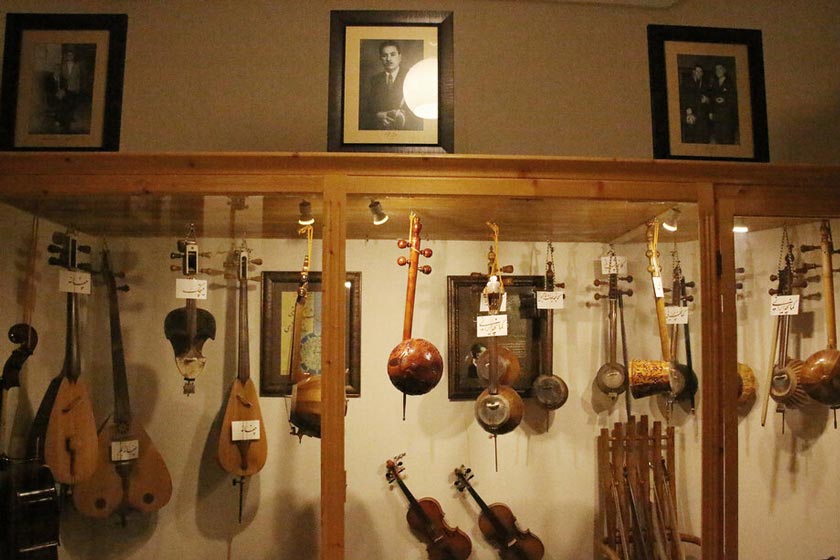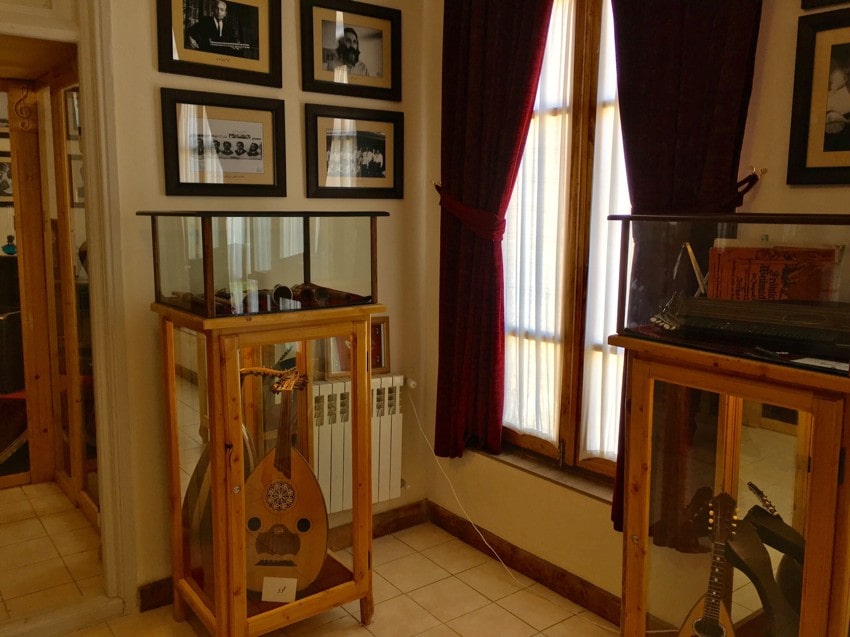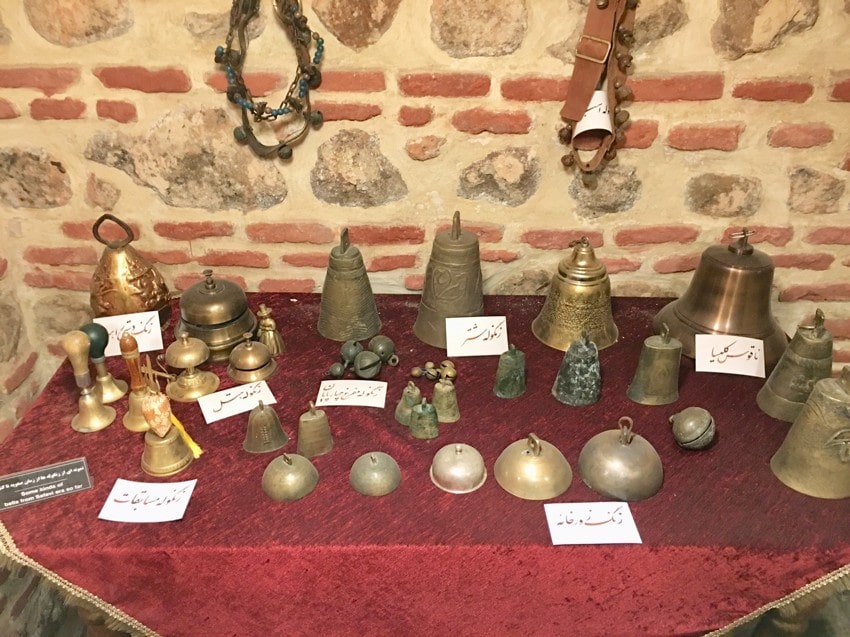Introduction to the Music Museum Sounds
The Music Museum Sounds of Tabriz, with its unique treasure of tools and songs, is the most pleasant audible destination for sightseeing. During the Qajar era, Tabriz was the second capital of Iran, and the city is also one of the big, clean, and modern cities in Iran. There are many museums in Iran, but Tabriz Music Museum are one of the unique museums and one of the first sound and music museums in Iran. The museum has displayed the history of the musician occupation and the age of authentic instruments and has been able to introduce people to music.
Tabriz Sound and Music Museum is the first specialized sound museum in Iran and the first specialized and private museum in East Azerbaijan province, which has opened the way to the beautiful world of music in the heart of Amir Parviz’s historical house. The unique museum displays a valuable treasure of objects and musical instruments in separate halls. Each hall, with the name of an artist from the music field, introduces a variety of percussion instruments, drums, Stringed, keyboards, wind instruments, etc.
The museum shows a unique treasure of instruments from various nations in the world. In addition to diverse and delightful tools from all corners of Iran and the world, you can see a complete collection of latches and significant door knockers, historical bells from the Safavid era to the present day, a pleasant audio archive, peepshows, ritual tools, and a specialized library in the museum. Another attraction of Tabriz Sound Museum is its location in the historical house of Amir Parviz, which hosts the unique museum. The stunning brick building is a valuable relic of the Qajar and Pahlavi eras.

The Founder of Music Museum Sounds
The Sound Museum, the valuable art chest, is the result of forty years of work by Hossein Sajedi, a Tabrizi researcher and tasteful artist. He created the unique Sound Museum after years of being a collector in 2017-2018 to keep musical instruments and tunes viable in the corner of history. The museum is the first Sound and Music Museum, which contains a private designer and manager. On behalf of Tabriz Cultural Heritage Organization, Mr. Sajedi took one of the old historical houses on Tarbiat Road from the heirs and turned it into a museum. The house belonged to the Calcutta chi family, but it inherited its name from the last owner, Amir Parviz, and is known as the “Amir Parviz” house.
Mr. Sajedi has bought and collected musical tools not only from our own country but from all over Iran. Among them, you can find local instruments with unique designs and materials, which are of high quality and made from the wood of trees or their fruit cores. Apart from having a vast music collection, Mr. Sajedi keeps a stunning and unique collection of paintings related to music in the museum. Mr. Sajedi’s profession is music and playing, so he is familiar with music and instruments. Mr. Sajedi has other activities besides his music work and organizes Iranian and local music training sessions for those interested in music. These meetings are related to local music, children’s music, Naghali, Takamchi (The ritual is one of the old rituals of Tabriz, held near Nowruz in ancient times), Masnavi, etc.
The Architecture of Music Museum Sounds
The museum has a large courtyard, a two-story building, several large and small galleries, and a basement. The architecture inside the building is unique and captivating, and the design is in an old style with nested halls separated from each other by a staircase. In each part of these halls, you can see special instruments, and their name is taken from the name of one of the great musicians. The courtyard of the museum is full of gardens and attractive flowers, next to which there are stone benches, and at night, the lights in the yard double their magnificence, and wordless classical music fills the museum atmosphere.

Sections 0f Music Museum Sounds
The First Floor and the Repair workshop
The first floor of the museum is a specialized library. This library has about 1000 books on poetry and music. In this part of the museum, some restore instruments, and artists fix old tools in a principled way.
The Second Floor 0f Music Museum Sounds
Hall of Audio Equipment (Ostad Eghbal Azar Hall)
Various audio equipment such as phonographs, oil and lamp radios, gramophones, cameras, old black, and white televisions, photos of Iranian musicians, etc., are displayed in the hall.
The String Instruments Hall (Ostad Salimi Hall)
In this hall, examples of the Santur, Shurangiz, Iranian and Azerbaijani strings, Tanbur, Setar, Harp, Rubab, Mandolin, and the oldest Sitar (a type of Indian instrument) are on display.
Hall of Wind Instruments (Ostad Babayan Hall)
In this hall, there are various instruments such as Saxophone, Balaban, Harmonica, Ney, Clarinet, Trumpet, hand-crafted clarinet, the biggest Touba, etc.
Bowed String Instrument Hall (Ostad Zavon Hall)
In this hall, you can see all kinds of Double-Bass, Cello, Viola, Violin, Iranian Azerbaijani and Lori Kamancheh, Ghaychak, etc.
Hall of Percussion Instruments (Ostad Farnam Hall)
This hall depicts all percussion instruments such as Drums, Tombak, Drum kit, Daf, Naqareh, etc.
Hall of keyboard Instruments
In this hall, you can visit various types of Pianos, Organs, Accordion, Harmonica, Melodica, and Garmon instruments from the Tsar period.

Audio and Photo Archive
The museum contains a complete audio archive from the Qajar period until now, including the Adhan of muezzins, Shabih Khani, Tazieh Khani, singers, etc. The museum includes a complete collection of photos of singers and musicians from the Qajar period until now.
Bells Section and the Basement of Music Museum Sounds
There is a complete collection of Zurkhaneh bells, court bells, camel bells, etc., from the Safavid period until now, in the bell section of the Sound Museum. There is a lecture hall, with 50 people capacity, in the basement of the Sound Museum, which is the place to hold all the specialized meetings. Throughout the halls, you can see photos that depict music and musicians on the wall, and the playing of classical and wordless music makes the museum ambiance more peaceful and pleasant.


